|
|
|
Sort Order |
|
|
|
Items / Page
|
|
|
|
|
|
|
| Srl | Item |
| 1 |
ID:
127707
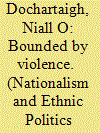

|
|
|
|
|
| Publication |
2013.
|
| Summary/Abstract |
This article analyzes the relationship between territoriality and organized violence through an examination of two relatively understudied aspects of the production and reproduction of informal territorial boundaries in situations of violent conflict. It looks first at the role of the state in the establishment, maintenance, and institutionalization of substate territories associated with challengers, outlining how these bounding processes are generated through interaction between the state and challengers, rather than primarily through the actions of challengers. Secondly, it explores the shaping force of geopolitical contexts on the everyday maintenance of informal boundaries in conflict situations. The argument is illustrated with examples from the most recent period of violent conflict in the north of Ireland, drawing on a range of primary sources, including official and private papers. The article argues that an analysis that gives due recognition to the central role of the state and the importance of the geopolitical context in the delineation and institutionalization of substate territories associated with armed challengers can help us to better understand the dynamics of organized violence.
|
|
|
|
|
|
|
|
|
|
|
|
|
|
|
|
| 2 |
ID:
072690
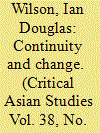

|
|
|
|
|
| Publication |
2006.
|
| Summary/Abstract |
This article examines the changing nature of organized violence in post-New Order Indonesia. The New Order regime, which ended with the overthrow of Suharto in 1998, employed violence as a central strategy for maintaining political control, both through the state apparatus and via state proxies: criminal and paramilitary groups acting in the state's behalf. In effect, violence and criminality were normalized as state practice. The collapse of the New Order and the resulting fragmentation of its patronage networks have prompted a decline in state-sponsored violence, but at the same time the number of non-state groups employing violence and intimidation as a political, social, and economic strategy has increased. This article looks at this phenomenon of the "democratization" and privatization of organized violence in post-New Order Indonesia via detailed case studies of a number of paramilitary and vigilante groups. While operating in a manner similar to organized crime gangs, each group articulates an ideology that legitimizes the use of force via appeals to ethnicity, class, and religious affiliation. Violence is also justified as an act of necessary rectification rather than direct opposition, in a situation where the state is considered to have failed in providing fundamentals such as security, justice, and employment.
|
|
|
|
|
|
|
|
|
|
|
|
|
|
|
|
| 3 |
ID:
140483
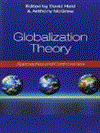

|
|
|
|
|
| Edition |
1st ed.
|
| Publication |
Cambridge, Polity Press, 2007.
|
| Description |
xi, 273p.pbk
|
| Standard Number |
9780745632117
|
|
|
|
|
|
|
|
|
|
|
|
Copies: C:1/I:0,R:0,Q:0
Circulation
| Accession# | Call# | Current Location | Status | Policy | Location |
| 058285 | 327.1/HEL 058285 | Main | On Shelf | General | |
|
|
|
|
| 4 |
ID:
097736
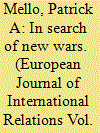

|
|
|
|
|
| Publication |
2010.
|
| Summary/Abstract |
This article examines the literature on 'new wars' as it evolved in Germany, Great Britain and the USA. In order to gain an overview of this heterogeneous field of research five hypotheses are derived concerning characteristics of 'new wars': (1) the erosion of the state's monopoly on the use of force; (2) the political economy of 'new wars'; (3) 'new wars' as asymmetric wars; (4) 'new wars' as identity-based wars; and (5) terrorism within the framework of 'new wars'. The concluding section addresses critiques, provides a brief summary and proposes future research.
|
|
|
|
|
|
|
|
|
|
|
|
|
|
|
|
| 5 |
ID:
122903
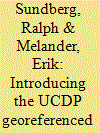

|
|
|
|
|
| Publication |
2013.
|
| Summary/Abstract |
This article presents the UCDP Georeferenced Event Dataset (UCDP GED). The UCDP GED is an event dataset that disaggregates three types of organized violence (state-based conflict, non-state conflict, and one-sided violence) both spatially and temporally. Each event - defined as an instance of organized violence with at least one fatality - comes with date, geographical location, and identifiers that allow the dataset to be linked to and merged with other UCDP datasets. The first version of the dataset covers events of fatal violence on the African continent between 1989 and 2010. This article, firstly, introduces the rationale for the new dataset, and explains the basic coding procedures as well as the quality controls. Secondly, we discuss some of the data's potential weaknesses in representing the universe of organized violence, as well as some potential biases induced by the operationalizations. Thirdly, we provide an example of how the data can be used, by illustrating the association between cities and organized violence, taking population density into account. The UCDP GED is a useful resource for conflict analyses below the state and country-year levels, and can provide us with new insights into the geographical determinants and temporal sequencing of warfare and violence.
|
|
|
|
|
|
|
|
|
|
|
|
|
|
|
|
| 6 |
ID:
127666
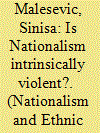

|
|
|
|
|
| Publication |
2013.
|
| Summary/Abstract |
This article analyzes the complex and contradictory relationships between nationalism and organized violence. The author challenges the approaches that see nationalism as being inherently linked with violence and demonstrates that nationalist ideology by itself is rarely a main cause of hostile acts. The article focuses on the different forms of organized violence including wars, revolutions, terrorism, and genocide. It aims to show that the relationship between violence and nationalism cannot be properly captured by the dominant intentionalist, naturalist, and formativist perspectives. Instead the case is made that the emphasis should be given to the long-term historical processes and the relative modernity of both nationalism and organized violence. The author argues that it is very difficult to generate sustained and organized violent nationalist action. The mutation of nationalist doctrines into violent acts is generally a product of unintended structural circumstances and is characterized by its temporary nature and volatility. More specifically, this process is usually generated by the coercive bureaucratization, centrifugal ideologization, and their capacity to be embedded in the networks of microsolidarity.
|
|
|
|
|
|
|
|
|
|
|
|
|
|
|
|
| 7 |
ID:
121407
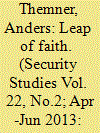

|
|
|
|
|
| Publication |
2013.
|
| Summary/Abstract |
Previous research has given scant attention to the issue of how and when ex-combatants resort to organized violence. This article fills this research gap by comparing ex-fighters in the Republic of Congo and Sierra Leone. It holds that ex-combatant violence is the result of interaction between entrepreneurs of violence, military affinities, intermediaries, and selective incentives. Ex-combatants take to arms when they have access to entrepreneurs of violence. By offering selective incentives and utilizing existing military affinities, entrepreneurs can generate the enticements and trust needed to convince ex-combatants to resort to arms. However, as entrepreneurs have limited contact with ex-fighters, they are dependent on intermediaries to do the actual recruiting for them. Contrary to previous assumptions, this article finds that ex-fighters are largely risk-averse individuals and that ex-combatant violence is seldom triggered by the mere presence of small arms, lack of economic opportunities, or experiences of insecurity.
|
|
|
|
|
|
|
|
|
|
|
|
|
|
|
|
| 8 |
ID:
127705
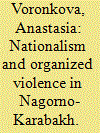

|
|
|
|
|
| Publication |
2013.
|
| Summary/Abstract |
This article analyzes the relationship between nationalism, territory, and organized violence in the ethnonational contestation over Nagorno-Karabakh. Drawing on new empirical material, I highlight discursive, perceptual, and representational aspects of territoriality that contribute to conflict intractability. I argue that a consideration of these dimensions has the potential to provide a fuller explanation of territorial rigidity than a single focus on the indivisibility of territory. The article further questions strong versions of "ethnic entrepreneurship" accounts. I advocate a perspective that considers the microsocial context of the shift to violent strategies. Oral narratives and their reinterpretation via interpersonal networks are highlighted as key mechanisms of individual radicalization.
|
|
|
|
|
|
|
|
|
|
|
|
|
|
|
|
| 9 |
ID:
127654
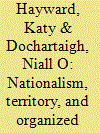

|
|
|
|
|
| Publication |
2013.
|
| Summary/Abstract |
Recent decades have seen significant advances in research on the relationship between nationalist ideology and organized violence. New scholarship has paid much closer attention to the microdynamics of violence, the strikingly uneven distribution of violence, the relationship between master cleavages and intimate local and personal struggles, and to process, history, and contingency. Nationalist ideology is understood to be bound up intimately with institutions and with everyday relationships at the local level. We introduce the contributions to this special issue, outlining the way in which they highlight the power of ideas, narratives, and microlevel solidarity in mobilization for violence and how they address the crucial importance of territoriality in linking ideas and action.
|
|
|
|
|
|
|
|
|
|
|
|
|
|
|
|
| 10 |
ID:
154850
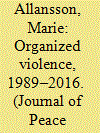

|
|
|
|
|
| Summary/Abstract |
The dramatic increase in the number of fatalities in organized violence, seen between 2011 and 2014, did not continue in 2015 and 2016. Rather, the notation of some 131,000 fatalities in 2014 was followed by a steep decline, with just below 119,000 in 2015 and a little over 102,000 fatalities in 2016. Despite the decrease, the number was the fifth highest during the entire 1989–2016 period. Most of the fatalities – over 87,000 – were incurred in state-based conflicts, the main driver behind the trend. Just as the number of fatalities, the number of state-based conflicts, albeit remaining on a high level, continued to decrease in 2016, going from 52 to 49, with 12 of them reaching the level of war, with at least 1,000 battle-related deaths. Also the non-state conflicts dropped in number in 2016, from 73 to 60. This was followed by a decrease in the number of fatalities, and only one conflict caused more than 1,000 deaths. Twenty-one actors were registered in one-sided violence, down by five from 2015. A number this low has only been recorded twice before; in both 2009 and 2010, 21 one-sided actors were listed in UCDP data. The number of fatalities also decreased, going from almost 9,800 to a little over 6,000.
|
|
|
|
|
|
|
|
|
|
|
|
|
|
|
|
| 11 |
ID:
131759
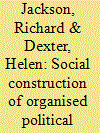

|
|
|
|
|
| Publication |
2014.
|
| Summary/Abstract |
This article proposes a general analytical framework for how we might better understand intrastate war and related forms of organised political violence. It begins by setting out our understanding of agency and structure, before outlining the key structures and agents central to the social construction of political violence. This is followed by a discussion of some of the common discursive practices frequently observed in the lead-up to the outbreak of organised violence, such as the widespread articulation of threat and victimhood narratives, the demonisation and dehumanisation of an enemy other, the renegotiation of norms of violence and the suppression of counter-hegemonic and anti-violence voices. The article argues that organised and sustained political violence is contingent on two key facilitating conditions. First, the presence of a particular set of material and discursive structures, including the military instruments for sustained violence, an economic basis for prosecuting war and a set of society-wide military norms, values and practices; and second, willing and capable agents who can transform the structural potential of the society or group into active participants in violence. The interaction of structures, agents and discursive practices can, in particular historical and spatial contexts, create the specific conditions which make organised violence possible. The discussion is illustrated by reference to a number of recent and historical wars, including the war on terror
|
|
|
|
|
|
|
|
|
|
|
|
|
|
|
|
|
|
|
|
|